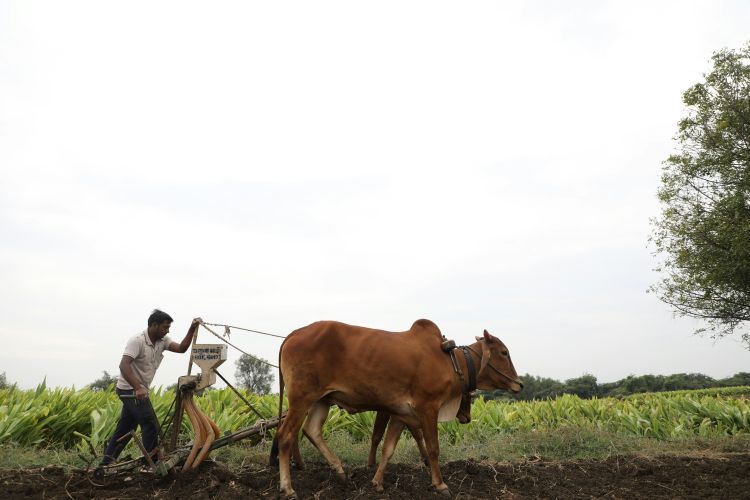Reforms agenda of Modi 3.0: Before the election results were announced, Prime Minister Narendra Modi said that his party’s third term would be marked by tough decisions. However, now that the BJP is returning to power without a clear mandate, complications are bound to crop up. Big bang reforms on land, labour, and agriculture may be placed on the backburner. The Bharatiya Janata Party faces a peculiar situation after the elections – it is short of a decisive majority, but will form government along with coalition partners.
The BJP’s challenge is compounded by the fact that it now has to balance its reform agenda with the priorities of its coalition partners. This balancing act means that policy making may face significant delays. Another significant challenge for the new government will be maintaining investor confidence. The uncertainty surrounding the implementation of key reforms could make investors wary, potentially affecting foreign direct investment (FDI) and economic growth. The government will need to work hard to reassure both domestic and international investors that its economic agenda remains on track, even within a coalition framework.
READ | Election 2024: How Modi’s BJP struggled in its strongholds
Reforms on the government wishlist
During Modi’s previous terms, he tried to create a business-friendly environment. His government relaxed labour laws and regulations, making it easier to hire and fire workers. Modi also has plans to reduce import taxes on key inputs for locally made goods which have significantly increased India’s manufacturing costs.
The government is also keen on improving the ease of doing business in India. This involves simplifying regulatory processes, reducing bureaucratic red tape, and creating a more transparent and predictable business environment. By addressing these systemic issues, the government hopes to attract more global companies to set up operations in India, thereby creating jobs and boosting economic activity.
Another focus area for India is to become a global manufacturing hub by offering subsidies for domestic production, similar to recent packages for semiconductor firms and electric vehicle makers. This aligns with the West’s China-plus-one strategy, making India a lucrative ally. However, wishing for something and actually achieving it are two different things, especially in a coalition government. For the first time, the Modi government will need to take its allies seriously, as they will have significant influence. Moreover, the opposition has grown stronger, presenting Modi with a more challenging battle in passing reforms.
The stronger opposition will mean that parliamentary debates will be more rigorous, and the government will have to present robust and well-argued cases for its policies. This increased scrutiny could lead to more refined and well-considered legislation, though it may also slow down the legislative process. The dynamics of parliamentary politics will require the government to be more strategic and collaborative in its approach.
The government will no longer be able to act on whims; instead, every policy proposal will undergo careful scrutiny in both Parliament and the court of public opinion. Privatisation and asset monetisation may be at risk, potentially dragging down government capital expenditure in the short term.
In light of these challenges, the Modi government might need to prioritise sectors that offer immediate economic benefits and broader political support. For instance, infrastructure development, which has wide-ranging economic impacts and is generally less politically contentious, could see continued emphasis. Projects that improve transportation, energy, and urban infrastructure could receive accelerated attention to maintain economic momentum.
Ratings agency Moody’s has affirmed that the BJP’s lacklustre performance may delay more far-reaching economic and fiscal reforms, potentially impeding progress on fiscal consolidation. However, the party will still push for policy continuity, particularly in infrastructure spending and boosting domestic manufacturing to support robust economic growth. While the broad direction of economic policy is unlikely to change, the new circumstances will make implementing critical reforms challenging. Some, however, believe that coalition governments have historically been able to push bolder and more visionary reforms, laying the foundation for India’s resurgence.
Reforms agenda and coalition govt
Coalition governments have a history of bold reforms. The Narasimha Rao-led government opening the economy and making India a member of the World Trade Organisation, Deve Gowda’s dream budget of tax cuts, Vajpayee’s fiscal responsibility law and rural infrastructure push, and Manmohan Singh’s focus on education, food security, rural employment and infrastructure are examples. The first NDA government also brought in the Information Technology Act in 2000, laying the foundation for the bustling e-commerce giant that India is today.
Those who worry that a coalition government may derail economic reforms should consider that even the single-party majority BJP did not deliver the expected strong reforms. Despite promises of stability and reform, the past two terms under Modi faced hiccups with initiatives like land acquisition and farm bills. The Modi government, even with a single-party rule, failed to provide confidence in policy stability. Two of the biggest reforms — the introduction of the Goods and Services Tax (GST) and the creation of the Insolvency and Bankruptcy Code — also faced turbulence. Moreover, the Modi government could not convince farmers about the farm reforms, and demonetisation injected a deep sense of uncertainty among all economic agents.
Since 1991, during the era of globalisation, all governments have been coalitions where even the leading party was far from the majority mark of 272. As Montek Singh Ahluwalia noted, even weak reforms required a strong consensus. In a country like India, this seems to be the ideal way forward, rather than a problem.

